Best Orlando Treatment for a
ACHILLES TENDINOPATHY
Are you not able to continue your cherished hobbies or everyday activities because of sharp pain in your foot or ankle when you move? With our expert doctors’ help, you can get to the root of your symptoms and get back to doing what you love quicker and easier.
Read More Ask A QuestionBest Orlando Treatment for a
ACHILLES TENDINOPATHY
Are you not able to continue your cherished hobbies or everyday activities because of sharp pain in your foot or ankle when you move? With our expert doctors’ help, you can get to the root of your symptoms and get back to doing what you love quicker and easier.
Read More Ask A QuestionHere Is Everything You Need To Know About Achilles Tendinopathy, What Causes It, and The Best Way to Treat It
Click the tabs below to get direct answers to your questions
What is achilles tendinopathy?
An Achilles tendon injury (tendinopathy) is one of the most common causes of pain felt behind the heel and up the back of the ankle when walking or running. While Achilles tendinopathy affects both active and inactive individuals, it is most common in active individuals; 24% of athletes develop the condition. Males experience 89% of all Achilles tendon injuries, and an estimated 50% of runners will experience Achilles pain in their running careers. In all individuals, Achilles tendinopathy can result in a limited ability to walk, climb stairs, or participate in recreational activities.
What are common causes of achilles tendinopathy?
Achilles tendinopathy is often the result of several
Achilles tendinopathy is an irritation of the Achilles tendon, a thick band of tissue along the back of the lower leg that connects the calf muscles to the heel. The term tendinopathy refers to any problem with a tendon, either short or long term. The Achilles tendon helps to balance forces in the leg and assists with movement of the leg and the ankle joint. Achilles tendinopathy results when the demand placed on the Achilles tendon is greater than its ability to function. This can occur after 1 episode (acute injury) or after repetitive irritation or “microtrauma” (chronic injury).
The severity of acute injuries is graded based on the amount of damage to the tendon:
- Grade I: Mild strain, disruption of a few fibers. Mild to moderate pain, tenderness, swelling, stiffness. Expected to heal normally with conservative management.
- Grade II: Moderate strain, disruption of several fibers. Moderate pain, swelling, difficulty walking normally. Expected to heal normally with conservative management.
- Grade III: Complete rupture, often characterized by a “pop,” immediate pain, inability to bear weight. Typically requires surgery to repair.
Most often, Achilles tendon pain is the result of repetitive trauma to the tendon. This repetitive strain can result in chronic Achilles tendinopathy, which is a gradual breakdown of the tissue and is most often treated with physical therapy.
The following may be risk factors for Achilles tendinopathy:
- Male
- Middle-aged
- Diabetic
- Poor calf muscle endurance
- Higher than average body weight
- Weak or tight calf muscles
- Stiff foot joints
- Poor hip and knee core stability
Where does it hurt?
Achilles tendon injuries occur anywhere along the Achilles tendon. In most cases, patients complain of pain in the
What are common symptoms of achilles tendinopathy?
Symptoms and common causes of Achilles tendinopathy may include:
- Ankle stiffness
- Calf tightness
- Calf weakness
- Abnormal foot structure
- Abnormal foot mechanics
- Improper footwear
- A change in an exercise routine or sport activity
Pain can be present at any point along the tendon; the most common area to feel tenderness is just above the heel, although it may also be present where the tendon meets the heel.
To Get A "Insider's Look" At Our Treatment Approach And How We Get Results...
Click Below To Watch Our Exclusive Webinar! It's Simple, Short, and It's Free!

- Learn The Essential First Step... So You Can Get Pain Free Again
- See Why Treatment Needs To Be Individualized, Not Standardized...So You Get Faster Results!
- Learn How You Can Save Money...So You Don't Have To Waste $1000's On Unnecessary Treatments
To Get A "Insider's Look" At Our Treatment Approach And How We Get Results...
Click Below To Watch Our Exclusive Webinar! It's Simple, Short, And It's Free!

- Learn The Essential First Step...So You Can Get Pain Free Again
- See Why Treatment Needs To Be Individualized, Not Standardized...So You Get Faster Results
- Learn How You Can Save Money...So You Don't Have To Waste $1000's On Unnecessary Treatments
Can achilles tendinopathy be treated?
Yes, Achilles tendinitis pain can be treated and with great results. Even better, many times it can be treated conservatively without needing injections, pain medications, or surgeries if you can address it early enough. The key to treatment is to solve the root cause of your pain so you can get the best results and a long term outcome.
Some root causes of Achilles tendinitis pain can be:
- Decreased hip and knee range of motion
- Poor running form
- Lack of ankle range of motion
- Weak hip and glute muscles
- Overload in training
- Poor lifting and running biomechanics
- Neural tension
- Leg length discrepancy
- Previous leg or hip injury
- Calf muscle weakness
- Poor footwear or running shoes
- Poor biomechanics with sports
- Trigger points in calf muscles
- Lack of foot range of motion
If you have failed multiple treatment approaches already, your clinician missed the real root cause of your pain and was just chasing the symptoms. The pain or symptom is the effect, not the cause. What do I mean by this? Say your fire alarm goes off in your house. Its purpose is to protect you and make you aware that something is wrong, i.e., that there is a fire in your house. The “alarm” is like your pain (your body’s way of telling
Additionally, there is a common root cause which many clinicians misdiagnose. They treat the ankle pain with a cookie cutter approach, hoping it will
The first step in treatment is to identify the root cause of your pain. A specific and individualized treatment approach for your type of pain can lead to a successful outcome for you and resolve your symptoms for the long term. This is why you can’t rely on a standard cookie cutter approach; you need a customized and individualized treatment approach specifically for your type of Achilles pain.
What happens if it goes untreated?
Minor case – If it is a minor case of Achilles tendinopathy pain, research shows that many acute cases of pain may spontaneously go away in 4-8 weeks. The key to prevent from becoming a more severe chronic case is to solve the root cause of the Achilles pain and determine what actually is causing it. Many times, it’s not really an Achilles pain problem and the cause is somewhere else. But who wants to wait 8 weeks to get pain free? Let’s try to solve the root cause of your pain in 2-3 weeks and address all of the risk factors present (so it never returns!) and get you back to your favorite activities faster! We still recommend that you get it checked out by one of our board-certified physical therapists to ensure that it is just a minor case, to solve all risk factors, and to get the optimal outcome in the fewest visits needed. Most minor cases resolve on their own in time or get better with some stretching and strengthening. But, the sooner you take action, the sooner you are pain-free. (And research supports this!)
Severe case – If it’s more of a severe and chronic case of Achilles tendinopathy pain, your pain will probably start to worsen and increase because the root cause and underlying risk factors of the pain are not being treated. Many people turn to pain medication and injections at this time but this only blocks the pain for short term. You may not feel the pain when taking pain medications, but the underlying problem is still there. Many people say after the pain medication and injection wears off, then usually the pain returns and sometimes it returns even worse. This is when you cannot run, jump, or play sports. Once the root cause is addressed, then we can start decreasing your pain, regardless of how chronic and severe the pain is. This is the crucial first step. It just may take more time to recover from a chronic case. Usually with chronic and severe cases, the longer you have your pain and injury, the longer it takes to resolve.
What outcome can you expect from treatment?
As we’ve discussed, the first step is to solve the root cause of your Achilles tendinopathy pain. This is the most essential step to plan a treatment specialized for you and your unique type of pain. Your root cause will guide your treatment and dictate what is the best way to treat your pain. This, along with identifying risk factors that may be predisposing you to have your pain and injury, will allow you to start getting pain free again. The next step is to start decreasing pain, modifying activities, and start addressing all of the impairments causing your pain which we discovered during your evaluation. With each session, pain should start to decrease and you should start to regain range of motion with less pain and symptoms. Any radicular and referred pain should resolve fast as well. At this point, we begin light and basic strengthening only if it does not increase pain. Treatment will consist
The next step is to achieve full range of motion, (which should correlate to being
To Get A "Insider's Look" At Our Treatment Approach And How We Get Results...
Click Below To Watch Our Exclusive Webinar! It's Simple, Short, and It's Free!

- Learn The Essential First Step... So You Can Get Pain Free Again
- See Why Treatment Needs To Be Individualized, Not Standardized...So You Get Faster Results!
- Learn How You Can Save Money...So You Don't Have To Waste $1000's On Unnecessary Treatments
To Get A "Insider's Look" At Our Treatment Approach And How We Get Results...
Click Below To Watch Our Exclusive Webinar! It's Simple, Short, And It's Free!

- Learn The Essential First Step...So You Can Get Pain Free Again
- See Why Treatment Needs To Be Individualized, Not Standardized...So You Get Faster Results
- Learn How You Can Save Money...So You Don't Have To Waste $1000's On Unnecessary Treatments
How is it diagnosed?
Your physical therapist will review your medical history and complete a thorough examination of your heel. The goals of the initial examination are to assess the degree of the injury and determine the cause and contributing factors to your injury. It is common for your physical therapist to perform a movement assessment. This may include watching you walk, squat, step onto a stair, or balance on 1 leg. The motion and strength in your leg will also be assessed. Your physical therapist may also ask questions regarding your daily activities, exercise regimens, and footwear to identify other contributing factors. Imaging techniques, such as x-ray or MRI, are often not needed to diagnose Achilles tendinopathy.
How can a Physical Therapist treat it?
Physical therapy promotes recovery from Achilles tendon injuries by addressing issues such as pain or swelling of the affected area, and any lack of strength, flexibility, or body control. When the condition remains untreated,
You and your physical therapist will work together to develop a plan to help you achieve your specific goals. To do so, your physical therapist will select treatment strategies including any or all of the following areas:
Pain.
Many pain-relief strategies may be implemented, such as applying ice to the area, putting the affected leg in a brace, or using therapies such as iontophoresis (a medicated patch placed on the skin that is electrically charged and used to decrease pain and inflammation) or therapeutic ultrasound.
Your ankle, foot, or knee joint may be moving improperly, causing increased strain on the Achilles tendon. Self-stretching and manual therapy techniques (massage and movement) applied to the lower body to help restore and normalize motion in the foot, ankle, knee, and hip can decrease this tension.
Muscular strength.
Muscular weaknesses or imbalances can result in excessive strain on the Achilles tendon. Based on your specific condition, your physical therapist will design an individualized, progressive, lower-extremity resistance program for you. You may begin by performing strengthening exercises in a seated position — for example, pushing and pulling on a resistive band with your foot. You then may advance to exercises in a standing position — for example, standing heel raises.
Manual therapy.
Your therapist may treat your condition by applying hands-on treatments to move your muscles and joints in order to improve their motion and strength. These techniques often address areas that are difficult to treat on your own.
Functional training.
Once your pain, strength, and motion improve, you will need to safely transition back into more demanding activities. To minimize the tension on the Achilles tendon and your risk of repeated injury, it is important to teach your body safe, controlled movements. Based on your goals and movement assessment, your physical therapist will create a series of activities that will help you learn how to use and move your body correctly to safely perform the tasks required to achieve your goals.
Patient education.
Your therapist will work with you to
If your surgeon decides that surgery is needed, physical therapy will be necessary after surgery for several months. Immediately after surgery, your ankle will be placed in a splint or cast with crutches to allow the repaired tissue to heal. Once sufficient healing has occurred, you will work with your physical therapist to progressively regain your ankle mobility and leg strength. He or she will also help you regain your ability to walk without assistance—and carefully guide your return over time to your desired recreational activities.
How long does it take for recovery?
Recovery time for Achilles tendinopathy pain depends on multiple factors:
- The severity and chronicity of your pain
- Whether your pain is an easy or complex case
- If the root cause of your pain was solved or if it was missed (this is the key to getting a great recovery!)
- How long you have been in pain for and when you need to be
pain free by - Other therapies and treatments you have tried
- Which medical professional(s) you saw prior to seeing us
- How active you are in trying to resolve your pain
- Which treatment approach is chosen and if it is proven to work for your pain
There are many factors that influence your recovery time and every patient’s recovery time is different. If you do nothing and don’t pursue treatment, it could gradually get better on its own, you could continue to have the same pain persist, or it could continue to get worse. As stated earlier, most acute cases may or may not resolve in 4-8 weeks. If you get expert treatment that solves the root cause of your pain, some cases resolve in 1-3 weeks! Then you can get back to sports, exercise, and your favorite activities without flare-ups and recurrences. Some of our patients are
If it is a complex case with chronic pain, your recovery may take longer, but you can still get a good outcome. Some chronic cases can resolve as fast as 2 months but can take as long as 4-6 months. It varies with every patient because every case of Achilles tendinopathy pain is different. Every patient’s recovery varies depending on the factors listed above. After a thorough evaluation here at Pursuit Physical Therapy, you will know your exact timeline of recovery, your prognosis, and when you should reach your goals.
How much does it cost?
The average cost of care for a case of spine pain in the US is $1800-$6600. This high price is due to many factors: the over-inflated cost of healthcare, the over expensive cost of unwarranted imaging (x-rays, CT scans, and MRIs) that is not needed, over-utilization of care (which increases the number of visits needed to be treated, requiring multiple visits to different doctors and physical therapists for the same diagnosis), and getting billed for unnecessary and unproven treatments that you don’t even need. All of these factors increase cost and this is why healthcare is so expensive. We strive to end that unnecessary, expensive cycle. In fact, we are currently publishing our first-year data with the University of Central Florida that shows the cost-effectiveness of our treatment approach.
This year, the average cost of our care was shown to be $814-$1141. Some of our patients get even as low as $315 for the full treatment! So if you have a deductible of $3,000-$10,000 and you have to pay out of pocket for your treatment, we can save you lots of money.
Remember, every case of pain is different and not all Achilles pain is the same. It is hard to predict exactly how much your treatment is going to cost you. But after a thorough evaluation, we can tell you exactly what is causing your pain, how long it is going to take, what the best way to treat it will be, and exactly how much it is going to cost. We have no hidden fees, no co-pays, and no miscellaneous bills that you will be surprised by 3 months after you receive treatment. Your pain, your diagnosis, your goals, and what is best for you dictate your treatment and how much it will cost, and while it varies for every patient, treatment at Pursuit is still much more affordable than standard healthcare.
How long are sessions?
Our evaluations are always one-on-one with one of our board-certified specialists and 60-90 minutes long. We like to perform thorough evaluations so we can solve the root cause of your pain, identify all risk factors, and make sure that we do it right. After the evaluation, you will know your diagnosis, the root cause of why you have your pain and symptoms, your prognosis, an expected timeline of when you should see results, what the best way to treat your pain is, how much it will cost, and your expected recovery outcome. We want you to fully understand everything about your pain and injury. What is best for you and will get you the best outcome is what will dictate your care and treatment. There will be plenty of time for you to ask questions so we can make sure you fully understand why you have your pain and what the best way to treat it will be. After the evaluation is completed, all treatment sessions are 60 minutes going forward and still one-on-one with your physical therapist. You and your physical therapist will design a customized treatment plan that works for you and that will achieve your goals.
How can it be prevented?
Maintaining appropriate lower extremity mobility and muscular strength, and paying particular attention to your exercise routine—especially changes in an exercise surface, the volume of exercises performed, or your footwear are the best methods for preventing Achilles injuries.
Your physical therapist will help guide you through a process that will progressively reintegrate more demanding activities into your routine without overstraining your Achilles tendon. Keep in mind that returning to activities too soon after injury often leads to persistent pain, and the condition becomes more difficult to fix.
What are next steps?
Getting started is simple. The first step, and the key to getting you pain free again, is to solve the root cause or your case of pain. Remember, not all pain is the same. Your pain is different than someone else’s pain, even though it may be in the same area. If you’re ready to get pain free, give us a call at (407) 494-8835 or fill out the form below. The next step is to schedule your evaluation so we can solve the root cause for you. We’re happy to answer any questions you may have and we would love the opportunity to help you.
Solve the root cause of your pain
How Our Treatment is Different
We believe that working with a specific specialist for your care is the best way to solve the root cause of your pain. Work one-on-one with a Doctor of Physical Therapy every time your visit our office.
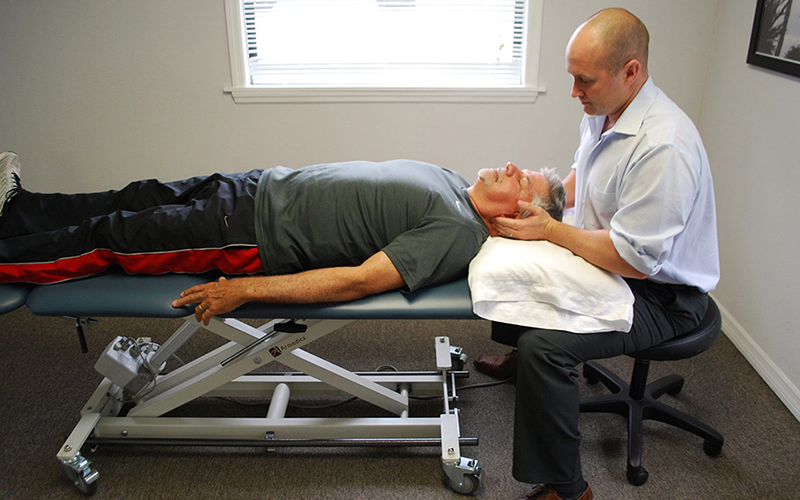
Exclusive one-on-one patient care
While most clinics will give you a limited amount of time with your Doctor, we believe that true results come from consistent one-on-one therapy.
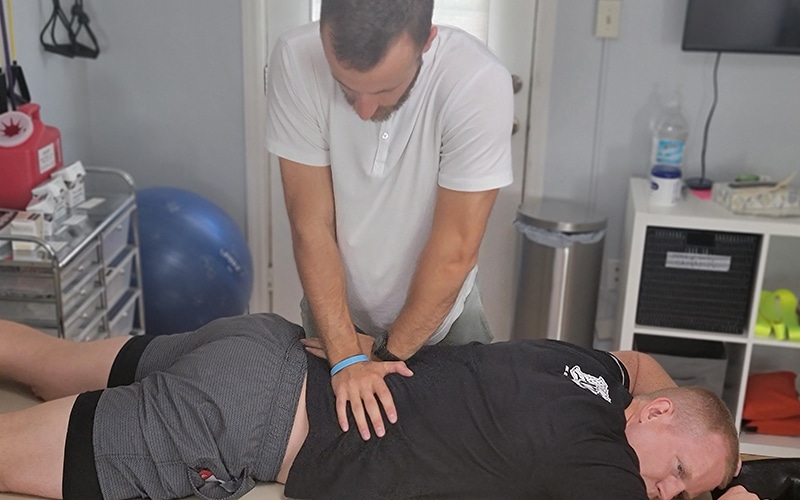
Work with your specialist every visit
Stop being handed off to trainees or non-Doctors for your Physical Therapy. At Pursuit, you'll work exclusively with your Doctor of Physical Therapy that specializes in your specific needs.
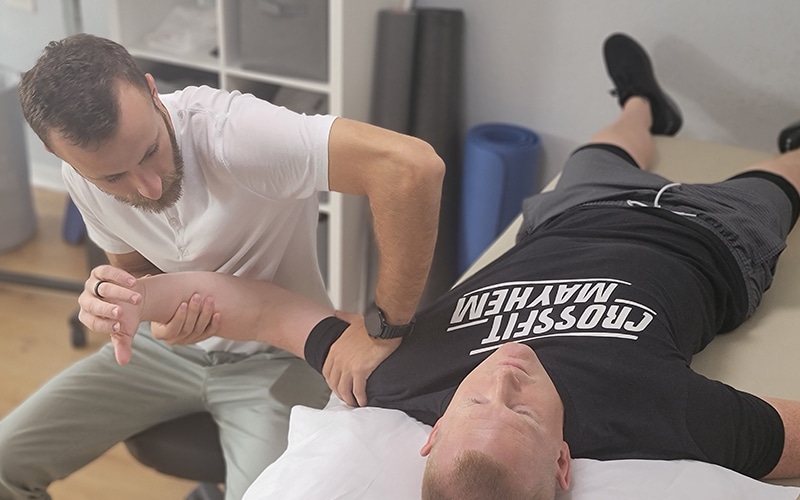
24/7 messaging access to your specialist
Ever have an issue or questions? We're here to help. Get 24/7 access to your specialist while you're under our care. Physical Therapy doesn't just happen when you're in our clinic, so we're here for you when you need us.
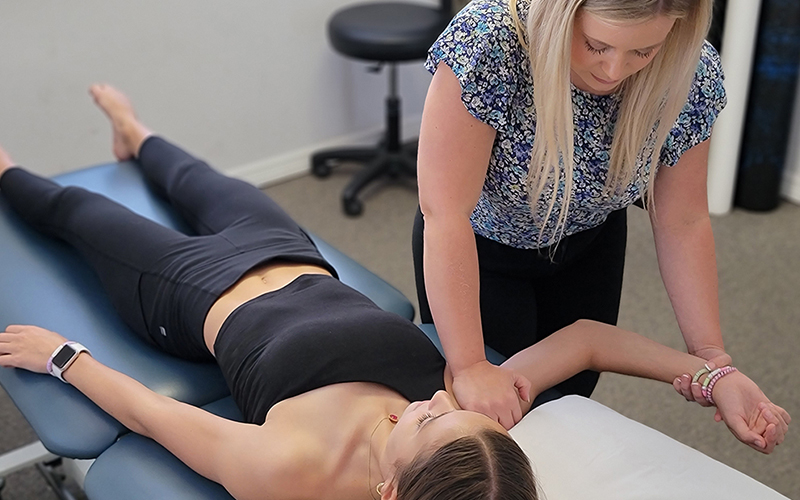
No waiting periods
Get off that waiting list and get the treatment you need. We're always ready to accept new patients, so you can get better faster and get back to a pain-free life that you deserve.
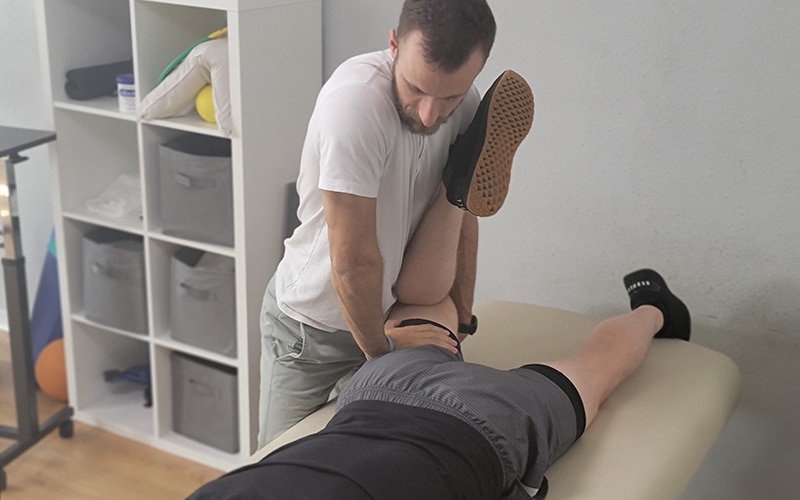
Not limited by insurance
Don't let the insurance companies tell you how much treatment you need. Avoid the limitations of short sessions that insurance provides and work with our Doctors when you need it and for as long as you need it.
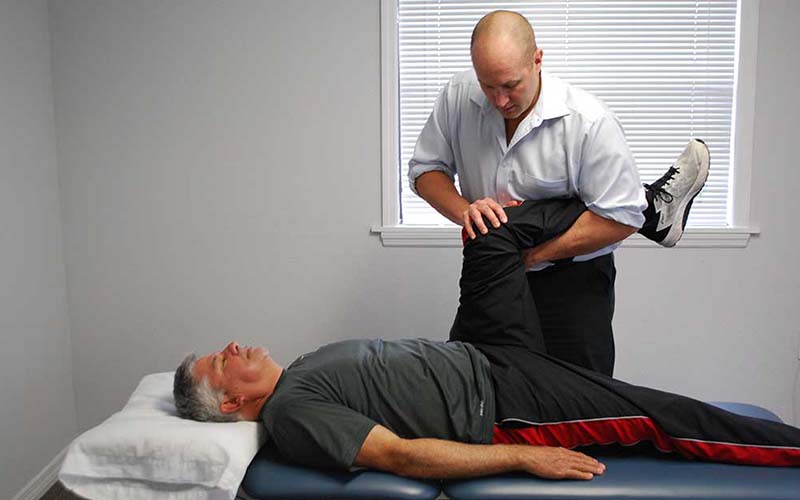
No painful injections, no expensive medications, no surgery
In order to truly solve your pain, we use a holistic approach to Physical Therapy, not relying on injections, medications, or surgery. Instead, we'll strengthen your body's weak points that are causing your pain.
MEET THE TEAM

RON MILLER, DPT, OCS, Cert DN
Doctor of Physical Therapy | Board Certified Orthopaedic Physical Therapy Clinical Specialist | Post-Doctoral Orthopaedic Residency Trained | Certified in Dry Needling | Titleist Performance Institute Certified
Dr. Ron Miller is the owner and founder of Pursuit Physical Therapy. His core belief is that it is not about the physician, the physical therapist, or the insurance company: it is about what is truly best for the patient. Dr. Miller started...

CAREY ROTHSCHILD, DPT, OCS, SCS, CSCS, CKTP
Doctor of Physical Therapy and Assistant Professor at the University of Central Florida | Board Certified Orthopaedic Clinical Specialist
| Board Certified Sport Clinical Specialist
Dr. Carey Rothschild is an Assistant Clinical Professor in the Doctor of Physical Therapy Program at the University of Central Florida. Dr. Rothschild earned a Bachelor of Health Science in Physical Therapy in 1999 from the University of Florida and a Doctor of Physical Therapy from Boston University in 2005...


MICHAEL FABRICK, DPT, Cert. DN
Doctor of Physical Therapy | Certified in Dry Needling | Pursuit Sports Performance Specialist | Professional Tennis Tour Physical Therapist
Dr. Michael Fabrick was born and raised in Hanover, Pennsylvania and attended Slippery Rock University where he received his Bachelor’s degree in Exercise Science. He then went on to receive his Doctorate Degree in Physical Therapy in May of 2020. During his final tenure as a Doctoral intern, he trained underneath Todd Ellenbecker, who is one of the world’s leading experts on shoulder rehabilitation and is the Vice President of Medical Services for the ATP World Tour...
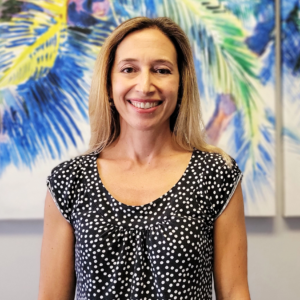
MARYANN DANIELS, PT, MCMT, IDN
Physical Therapist | Dry Needling Certified | Mastery Certified In Manual Therapy | Pelvic Floor And Post Partum Specialist
Maryann was originally born in Connecticut but moved to Florida with her family at the age of 9 and she grew up in Jupiter, Florida. She then went to college at the University of Central Florida...

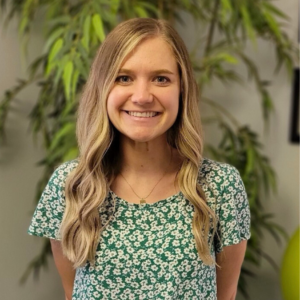
Kayla Cook, DPT, HSP, CSCS
Doctor of Physical Therapy | Hesch Sacroiliac Practitioner | Certified Strength And Conditioning Specialist | Ehlers-Danlos Syndrome Specialist | Volleyball Specialist
Dr. Kayla Cook was born and raised in Northern California and received her undergraduate degree in Kinesiology from California State University in Sacramento. She then received her Doctorate in Physical Therapy from The University of St Augustine for Health Sciences...
BECOMING PAINFREE IS EASIER THAN YOU THINK

Step 1:

Step 2:


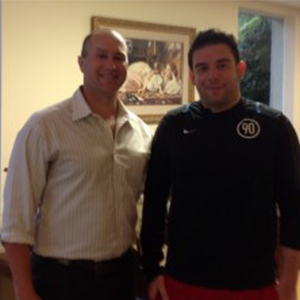 Rigo A.
Rigo A.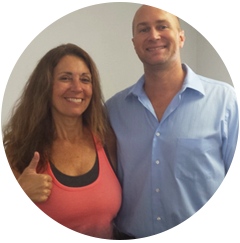 Lisa B.
Lisa B.